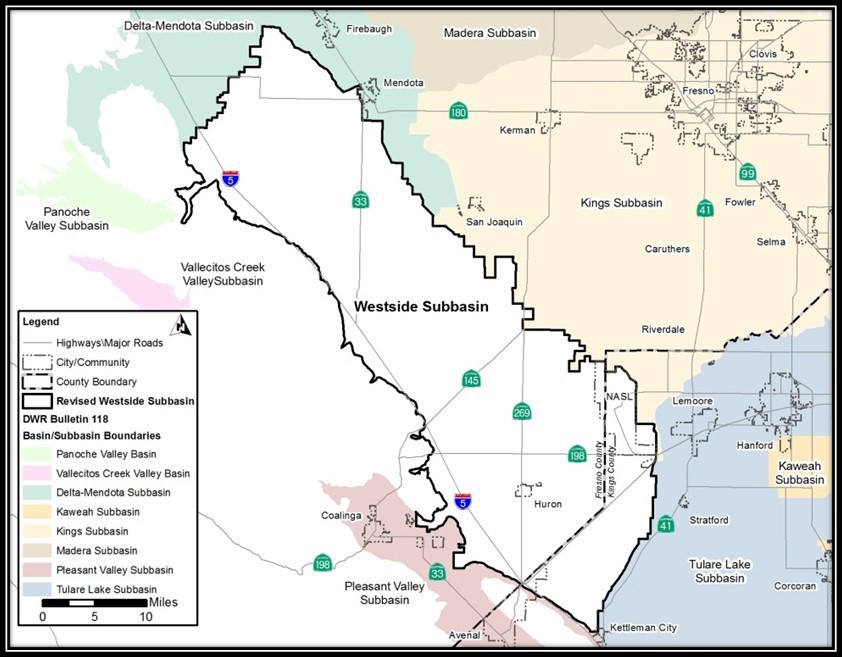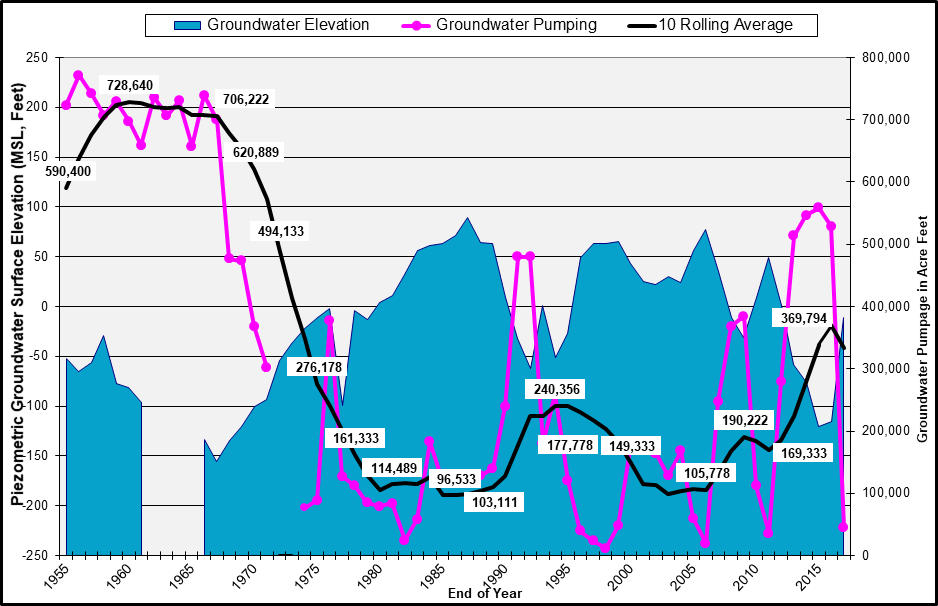Six months to SGMA
Westlands’ role as a Groundwater Sustainability Agency
The countdown has begun.
In six months’ time — by January 2020 — many of the state’s Groundwater Sustainability Agencies (GSAs) will be required to submit their Groundwater Sustainability Plans (GSPs) to the California Department of Water Resources (DWR).
Westlands Water District (Westlands) serves as the GSA of the Westside Subbasin. It is one of the state’s initial 260 GSAs formed in over 140 basins. DWR designated the Westside Subbasin as a high priority basin, determined the Subbain was in critical overdraft, and concluded the Subbasin suffered from reduced groundwater storage, degraded quality of water, land subsidence, and low groundwater levels.

What is SGMA?
On September 16, 2014, Former Governor Jerry Brown signed into law a set of bills that are now commonly referred to as the Sustainable Groundwater Management Act (SGMA) –pronounced “sig-ma.” SGMA created a comprehensive program to stabilize groundwater supply in California and protect the structural integrity and available capacity of the state’s numerous underground aquifers.
SGMA is intended to empower local agencies to halt overdraft and bring groundwater basins into balance. To accomplish that, SGMA called for the creation of GSAs, which have the responsibility of developing GSPs, which must outline how groundwater will be sustainably managed, how overdraft will be prevented, and how the GSA will ensure the long-term reliable use of groundwater, generally by the year 2040.
Westlands as a GSA – Outreach and Information Development
Westlands, serving as the GSA for the Westside Subbasin, is preparing to adopt its GSP by January 2020. As part of that process, Westlands has hosted 15 public outreach events to obtain input from and collaborate with its water users, neighboring water agencies and GSAs, community members, and other interested people on Westlands’ ongoing SGMA activities, including the development of the GSP.
A critical foundation for the GSP is a groundwater model for the Westside Subbasin. Westlands developed the model and calibrated it using historical groundwater usage data for the period 1988 to 2015 [view below]. The model simulates groundwater supply and elevation levels with different climate change scenarios, future recharge projects, hydrogeology (natural movement of water) and land use conditions.

Ongoing Research
In its history, Westlands has actively developed and implemented innovative methods to improve efficient use of the state’s precious water resources. In its effort to implement SGMA, Westlands is taking progressive steps in researching projects that may support the GSP.
For example, the District is studying the potential for aquifer storage and recovery (ASR). ASR would allow injection of surface water into the Subbasin during surplus water years – to serve as a savings account – which can be used during the dry years without frustrating the purposes of SGMA. Westlands conducted an ASR pilot project in 2017 and is completing environmental review of a long-term program, so that, if approved, ASR can be implemented as soon as the GSP is adopted. In addition, Westlands is evaluating “in lieu” recharge programs, to encourage farmers to use surface water when it is available for irrigation, in lieu of pumping groundwater.
Learn more about Westlands GSA
Westlands will continue to hold public meetings and workshops on the development of its GSP. Its water users, neighboring water agencies and GSAs, community members, and other interested people are encouraged to share their comments, questions, and ideas at those meetings and workshops or by email at [email protected].
For more information, visit the Westlands’ SGMA portal here.
